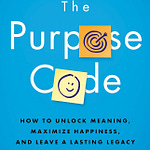“The Organization of Journalism: Making Models and Practice in a Fraying Profession” by Patrick Ferrucci
It’s a new world when it comes to journalism. That prompted Patrick Ferrucci, the head of the journalism department at the University of Colorado at Boulder, to go out and see how that world has changed.
The Organization of Journalism offers a profile of six different business models that now bring folks the news or sports, as the case may be. There’s the St. Louis Beacon, a digital nonprofit, and the Defector, an employee-owned cooperative focusing on sports and culture. The Colorado Sun, a startup led by former Denver Post employees, and the Athletic, a sports site purchased by the New York Times in 2022, are also reviewed along with two “legacy” newspapers, the Boston Globe and Denver Post.
Each model with its different support mechanisms has pros and cons, noted Ferrucci, who holds no misconceptions about the daunting task ahead regarding news-gathering in the digital era. “We are living in scary times for journalism,” he notes. That can also be translated into scary times for readers or want-to-be readers, many of whom are deprived of information routinely offered by the daily paper they once knew.
Depending on where you live, your proximity to a major metropolitan area probably dictates how much local news is put on your plate. Ferrucci said that Boulder, Colo. has more news available to the public than when he moved there 10 years ago. The resources of a well-to-do community and the presence of a large university make that possible. Other parts of the country aren’t so lucky.
Ferrucci’s research—he interviewed employees at every stop—illustrates how the journalism scene has changed. In comparing the Globe and Post, both papers with pedigrees, Ferrucci said the Boston model, owned by billionaire John Henry, owner of the Boston Red Sox, was now positively regarded as a “writer’s paper” by many in the Globe newsroom.
That’s not the sentiment Ferrucci perceived from those interviewed at the Post, a paper bought in 2011 by Alden Global Capital, the so-called “hedge fund vampire,” a company that reduced the Post newsroom of 300 down to 70 and moved the paper from a historic downtown building to a site outside the city in 2018. While the Post still does good work, many of its employees feel they’re shortchanging readers because they don’t—can’t—cover the state like they once did, said Ferrucci.
The Globe has also changed its focus: Instead of covering the suburban scene as it once did, he said the paper goes after Boston stories while recognizing the changing news scene. With the Providence Journal in decline, the Globe has beefed up staffing to cover Rhode Island more closely and, as a result, is building a subscription base there, said Ferrucci.
One of the points Ferrucci makes in speaking with Steve Tarter is that universities may be more important than ever in the development of journalism. “We’ve always had journalism schools,” he said but the present situation where many different models are vying for acceptance requires the understanding once found in the nation’s newsrooms now diminished in size.
Speaking of newsrooms, that’s Ferrucci’s next project: a look at those places that have spawned so much journalism in the past.












Share this post